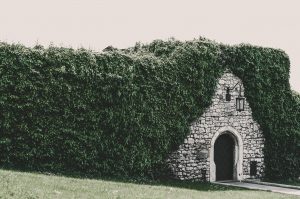Cosmopolitan life has increasingly left people thirsting for nature. Is not for nothing. Research linked to a concept called biophilia affirms that human beings, throughout evolution, are driven to love living things and not inanimate objects.
That is why we feel so good about getting in touch with nature. But, how to resolve this issue living in an apartment?
The liveliness of the plants, combined with good design, will add a touch of elegance and charm to the apartment if the balcony is spacious, even better. For a successful landscaping project, some points such as wind, lighting, fertilizer, types of plants, and pots have to be carefully thought out.
In today’s post, we list landscaping tips so you can set up your own corner, no matter whether on the balcony or in the living room. Read on and see what can be done.
Watch the wind
In the case of places where strong winds circulate, plants with broad, long leaves will be a problem. So, choose plants like bamboo orchid, lavender, mussaenda, agave, among others. That is medium plants with strong stems.
Make a climbing wall
In the case of a less spacious balcony, or in the absence of it, place the potted plants on the wall. With wooden demolition slats and galvanized steel boxes, it is possible to have a corner full of textures and style. Ferns are perfect for this combination.
Invest in green, fresh, and organic leaves
Imagine remembering that you need rosemary while cooking. Instead of having to go to the supermarket, walk to the garden and remove the fresh, pesticide-free spice. In addition to being healthier, having a vegetable garden with the main vegetables, spices, and spices in the apartment will add beauty and aroma to the garden.
An interesting option is the latticed panels with shelves. In them, you can place pots with the most diverse vegetables. For cultivation, a tip is to use substrate. They have a lot of nutrients, are lighter, and need to be replaced less frequently than common ground.
Use elegant touches
In case you choose the balcony as an alternative for your garden, keep in mind a decoration with elegant touches and neutral elements. The Scandinavian design works very well in this case. More neutral colors will balance the environment full of greens and if it interests you, the color of the flowers.
Plants for landscaping tips
When it comes to the size of the vase and lighting, the unknowns are great, but there is not much secret: in environments with little sunlight, orchids are a great option; when the place is more lit, plants such as boxwood and azalea are the best choices.
In the case of graphics and anthuriums, these are plants that need large pots to be grown. In medium-sized pots, ferns, beehives, and peace lilies work well. There is still the option of growing plants in the water, such as boa constrictors and lucky bamboo, for example.
Think about vessel types
The types of pots are very important when thinking about the composition of the garden. Reflect on the colors, shapes, materials, and finish of each one. They must adorn the type of garden and be in accordance with the plant that will be cultivated. To facilitate the maintenance of plants, escape from very heavy pots. However, if there is nowhere to run, use casters under them.
Be part of the environment
Sunbeds and stools cannot be overlooked. For family interaction with the most natural corner of the house to be possible, these pieces of furniture need to be part of the environment. For those with space, investing in a table so that breakfast is on-site is a good choice.
…

 The fence is also the first element that visitors to your home discover. But your budget for outdoor work is limited? Through a series of questions and answers, this article will help you choose the right affordable fence:
The fence is also the first element that visitors to your home discover. But your budget for outdoor work is limited? Through a series of questions and answers, this article will help you choose the right affordable fence:
 You want the design approach to be as simple as possible, meaning less visually busy. The busier the bathroom, the smaller it will feel. You want to keep patterns to a minimum, keep color options toned down, create long, streamlined lines, and not use too many accessories.
You want the design approach to be as simple as possible, meaning less visually busy. The busier the bathroom, the smaller it will feel. You want to keep patterns to a minimum, keep color options toned down, create long, streamlined lines, and not use too many accessories.
